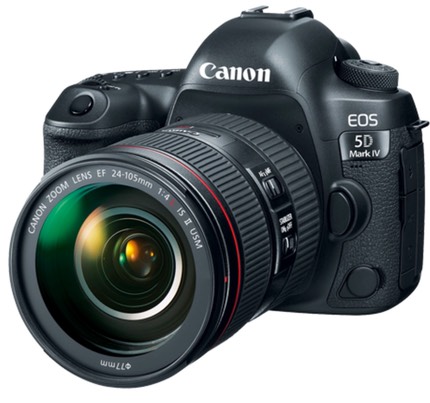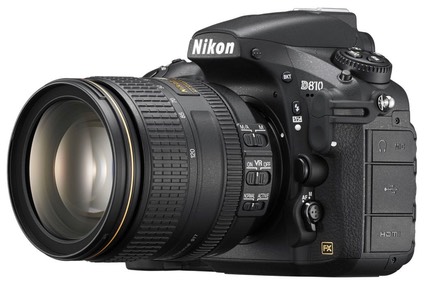Let's face it, we live in an age of exceptional cameras and lenses.
As happened with High Fidelity back in the 70's, we've somehow managed to argue our way into little nooks and crannies trying to suss out very small—and to most people unnoticeable—differences. Meanwhile, every camera maker has at least one product that 15 years ago we would have regarded as "stellar," and which today and for the foreseeable future can produce exceptional images.
I'm going to go out on a limb here and define what those cameras are. This article is actually split into two: this article covers the DSLRs and sansmirror covers the mirrorless cameras (duh).

Canon's top camera is the 1Dx Mark II, but the camera that I think probably best sums up everything Canon has to offer for photo enthusiasts is the 5D Mark IV. No, it doesn't shoot as fast as the 1DxII, nor does it have the pixel count of the 5Ds. But really, this is a extremely well-rounded camera that does everything well. Given that it's the fourth camera in a key DSLR line for Canon, that is no surprise. Canon's had a long time to learn how to optimize this camera for a demanding audience, and it shows.
Let's face it, if you need more than 6720 x 4480 pixels—basically more than you need for a 19x13" print, the largest size a desktop inkjet printer can create—you're into a realm where you have to consider some very expensive cameras, including medium format ones. About the only two "faults" I can find with the 5DIV are these: (1) the Nikon D810 beats it in base ISO dynamic range; (2) the 1/200 flash sync speed on the shutter is disappointing.
Truly, what else would I need in a camera?

And speaking of the Nikon D810. Just as the 5D Mark IV isn't Canon's top camera, the D810 isn't Nikon's (that would be the D5). Yet this three year old (!) camera manages to do everything I've ever wanted it to, and then some. We're up to 7360 x 4912 pixels—still more than I need for a desktop inkjet print—and a sensor that has boggled minds since it first appeared in 2012. All in a camera that was very carefully crafted to fix virtually every small issue in handling that users had with its predecessor.
Again the "faults" are few: (1) 5 fps is a little slow for action; (2) there's no 4K video, and (3) no built-in GPS like the 5DIV.

Meanwhile, Pentax has taken that same great sensor Nikon has been using and put it into a technical tour de force that's less expensive than the Nikon: the US$1799 Pentax K-1. The big claims to fame here are the sensor-based IS and the pixel-shift that creates even higher resolution (or perhaps more accurately, more acuity). Faults? Oh, maybe (1) 4.4 fps, (2) no 4K video, and (3) a focus system that is clearly still behind Canon/Nikon in performance. USB 2.0 doesn't seem like the right choice for all those pixels, either.
Serious DSLR enthusiasts should be in seventh heaven with any one of those cameras. Sure, a new model of something might have a feature or performance that is better than those three DSLRs, but realistically, if you had to shoot for the next three or four years with any of those cameras, I'm not sure what you'd complain about.
What about Sony Alpha? I can't really call the A99 Mark II a DSLR. It's really a hybrid between DSLR and mirrorless. But if you want to call it a DSLR, yes, it too is right up there in the rarified air with the other really great enthusiast DSLRs, with few faults.
Meanwhile, DSLR lenses are in a golden age, too.
I'll start with Nikon lenses, because recent Nikkors have been knocking it out of the park lately. In the FX lens lineup, we'd have to go all the way back to 2011 to find a lens I thought wasn't a top performer in its category (the 50mm f/1.8G). The recent E-type lenses have all been exceptionally good. And Nikon has even surprised us with some more reasonably-priced speciality lenses that work great (e.g. the 200-500mm f/5.6E, or the more recent 8-15mm f/3.5-4.5E). Some recent lenses are so good that they defy logic. The 70-200mm f/2.8E FL simply redefines what we should expect out of a zoom: it's prime telephoto lens good, and that's saying a lot.
Canon, meanwhile, has been a little bit more subdued in the last year or two, mostly iterating lenses that already existed in their full frame lineup. But each of those that I've tried has clearly been a step forward from already good previous lenses (e.g. the 16-35mm f2.8L III). We have to go back a bit further to find some new interesting lenses from Canon (e.g. 400mm f/4 DO, 200-400mm f/4 with built-in TC), but those both rock for certain types of shooting.
Pentax did redo their 24-70mm and 70-200mm lenses in 2015, but I'd say that they're lagging a bit now in terms of state-of-the-art lenses that a serious enthusiast would want with their high-powered cameras. But that's the tyranny of numbers. Canon and Nikon are shipping 90%+ of the world's DSLRs these days, so the demand is EF and F mount for lenses.
That shows up in the third parties, too, who mostly pay attention to the Canon and Nikon mounts.
Sigma, in particular, has been a roll with their Art lenses lately. I've not found a single one that underwhelms, especially at the prices Sigma is charging, which tend to be lower than the camera makers for similar optics. Indeed, Sigma's Art primes lately have been exceptionally good—bordering on Zeissdom—and their limited focal range zooms (e.g. 12-24mm or 24-35mm) aren't far behind.
Tamron, too, seems to have gotten a second wind. Anything marked G2 seems to be very good, and all the full frame primes they've done in the last three years are right up there with the Sigma Art lenses. Bravo.
So what is it that a DSLR user should be complaining about? Arguably, nothing. Three great, flexible, high performance camera bodies, many great lenses to choose from, all of which are getting better lately.
Simply put, if you aren't generating great photos from your DSLR and lenses, something is wrong. Very wrong. We've got exceptional products to use now, so make sure you know how to use them to best advantage.





